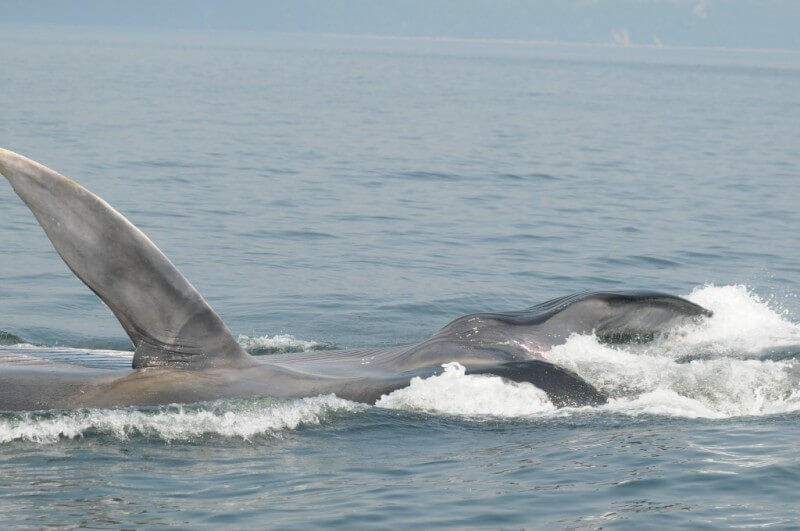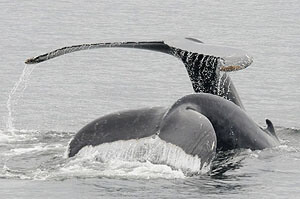A little privacy
Copulations are rarely observed in the wild or even in captivity. Based on these observations, mating can take place belly to belly or turned on the side. The erect penis can be guided using muscles, almost as if it were equipped with a homing device. During copulation, the vagina receives the male organ and thus the sperm. With a bit of luck, the female’s egg is fertilized.
The miracle of life
The fetus develops in the uterus of the mother, who feeds it through the placenta. Gestation generally lasts between 10 and 12 months, even 16 months in some species. Calves are most often born tail first. Though quite rare, the female may give birth to twins. The newborn’s energy needs are taxing and a female will struggle to provide for two. At birth, humpback whale calves will already have reached a third of their mother’s length and one-twentieth of her weight. Which is comparable to the proportions of a human baby. However, newborn Atlantic white-sided dolphins are much larger: half the length of the adult and one-sixth of its mass! Immediately upon birth the calf is able to swim, surface to breath, emit sounds and drink its mother’s milk. Young are looked after by the female.
Little whale grows up
The young whale grows quickly thanks to its mother’s rich milk, which has a fat content of 20 to 40%, depending on the species! A blue whale calf, for example, puts on 80 kg a day. It leaves its mother once weaned, seven months later… and 17 tonnes heavier! However, for many toothed whales, the bond between mother and her young lasts beyond nursing. In some killer whale populations, the young will even spend their entire lives with their mother, in a family unit in which the father is absent.
And the story repeats itself!
A female can give birth about every two to three years, sometimes even annually, as is the case for the harbour porpoise. The age at which young cetaceans can in turn reproduce varies from one species to the next. For blue whales, sexual maturity for both males and females is reached after about 5 years. Male sperm whales on the other hand must wait over 20 years before taking a shot at procreating.





